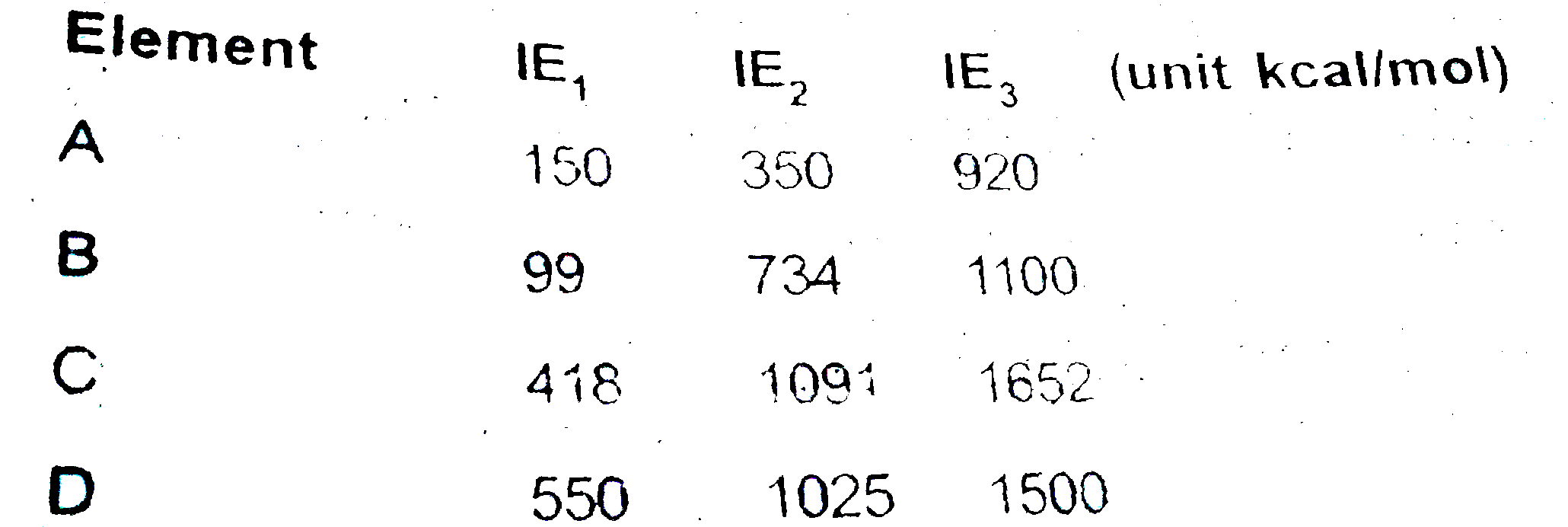With the help of Bohr 's model , calculate the second ionisation energy of helium (energy required to remove the electron from He⊕
The correct Answer is:A, B, D
To calculate the second ionization energy of helium (He), which is the energy required to remove the second electron from the ion He⁺ (helium with a +1 charge), we can use Bohr's model of the atom. Here’s a step-by-step solution:
Step 1: Understand the Ionization Process
The second ionization energy refers to the energy required to remove an electron from He⁺. Helium has an atomic number (Z) of 2, meaning it has 2 protons and, in its neutral state, 2 electrons. The first ionization removes one electron, resulting in He⁺.
Step 2: Use Bohr's Formula for Energy Levels
According to Bohr's model, the energy of an electron in the nth orbit of a hydrogen-like atom can be calculated using the formula:
En=−1312Z2n2 kJ/mol
where:
- En is the energy of the electron in the nth orbit,
- Z is the atomic number,
- n is the principal quantum number.
Step 3: Determine the Values for Helium Ion (He⁺)
For He⁺:
- Z=2 (since helium has 2 protons),
- n=1 (the electron is in the first energy level).
Step 4: Calculate the Energy of the Electron in He⁺
Substituting the values into the formula:
E1=−1312×2212
Calculating this gives:
E1=−1312×41=−5248 kJ/mol
Step 5: Calculate the Second Ionization Energy
The second ionization energy (IE2) is calculated using the formula:
IE2=E∞−E1
where E∞ is the energy of an electron when it is completely removed (which is 0 kJ/mol).
Substituting the values:
IE2=0−(−5248)=5248 kJ/mol
Conclusion
The second ionization energy of helium (He) is:
IE2=5248 kJ/mol
---
The second ionization energy refers to the energy required to remove an electron from He⁺. Helium has an atomic number (Z) of 2, meaning it has 2 protons and, in its neutral state, 2 electrons. The first ionization removes one electron, resulting in He⁺.
According to Bohr's model, the energy of an electron in the nth orbit of a hydrogen-like atom can be calculated using the formula:
En=−1312Z2n2 kJ/mol
where:
- En is the energy of the electron in the nth orbit,
- Z is the atomic number,
- n is the principal quantum number.
For He⁺:
- Z=2 (since helium has 2 protons),
- n=1 (the electron is in the first energy level).
Substituting the values into the formula:
E1=−1312×2212
Calculating this gives:
E1=−1312×41=−5248 kJ/mol
The second ionization energy (IE2) is calculated using the formula:
IE2=E∞−E1
where E∞ is the energy of an electron when it is completely removed (which is 0 kJ/mol).
IE2=0−(−5248)=5248 kJ/mol
The second ionization energy of helium (He) is:
IE2=5248 kJ/mol
Topper's Solved these Questions
- ATOMIC STRUCTUREBOOK - CENGAGE CHEMISTRY ENGLISHCHAPTER - ATOMIC STRUCTUREEXERCISE - Concept Applicationexercise(4.3)
19 Videos
- ATOMIC STRUCTUREBOOK - CENGAGE CHEMISTRY ENGLISHCHAPTER - ATOMIC STRUCTUREEXERCISE - Concept Applicationexercise (4.1)
11 Videos
- APPENDIX - INORGANIC VOLUME 1BOOK - CENGAGE CHEMISTRY ENGLISHCHAPTER - APPENDIX - INORGANIC VOLUME 1EXERCISE - chapter-7 Single correct answer
1 Videos
- CHEMICAL BONDING AND MOLECULAR STRUCTUREBOOK - CENGAGE CHEMISTRY ENGLISHCHAPTER - CHEMICAL BONDING AND MOLECULAR STRUCTUREEXERCISE - Archives Subjective
15 Videos
Similar Questions
Knowledge Check
The binding energy of the electron in the ground state of He atom is equal to E0=24.6eV. Find the energy required to remove both the electrons from the atom.
A49.2eVB54.4eVC79eVD108.8eV
How much energy is required to ionise a H - atom if the electron occupies n=5 orbit ? Compare your answer with the ionization energy of H-atom (energy required to remove the electron from nth orbit ).
View SolutionIonisation energy is the amount of energy required to remove the outermost e− from a gaseous atom. It's unit is kJ/mole or kcal/mole.
Successive ionisation energy - It is the amount of energy required to remove electron successively from a gaseous ion. These are termed as IE2,IE3,IE4 etc. the difference in the values of IE1,IE2 and IE3 helps to determine electronic configuration of the element.

Which element is a noble gas ?
View SolutionIonisation energy is the amount of energy required to remove the outermost e− from a gaseous atom. It's unit is kJ/mole or kcal/mole.
Successive ionisation energy - It is the amount of energy required to remove electron successively from a gaseous ion. These are termed as IE2,IE3,IE4 etc. the difference in the values of IE1,IE2 and IE3 helps to determine electronic configuration of the element.

Which of the following is a non-metal ?
View SolutionWhat is the energy required to remove an electron from second orbit of hydrogen atom ?
View SolutionWhat is the energy required to remove an electron from second orbit of hydrogen atom ?
View SolutionCalculate the ionisation energy of He+ if that of H atom is 13.6eV.
View SolutionAn energy of 24.6eV is required to remove one of that electrons from a neutal helium atom. The enegy (in eV)required to remove both the electrons from a netural helium atom is
View Solution
